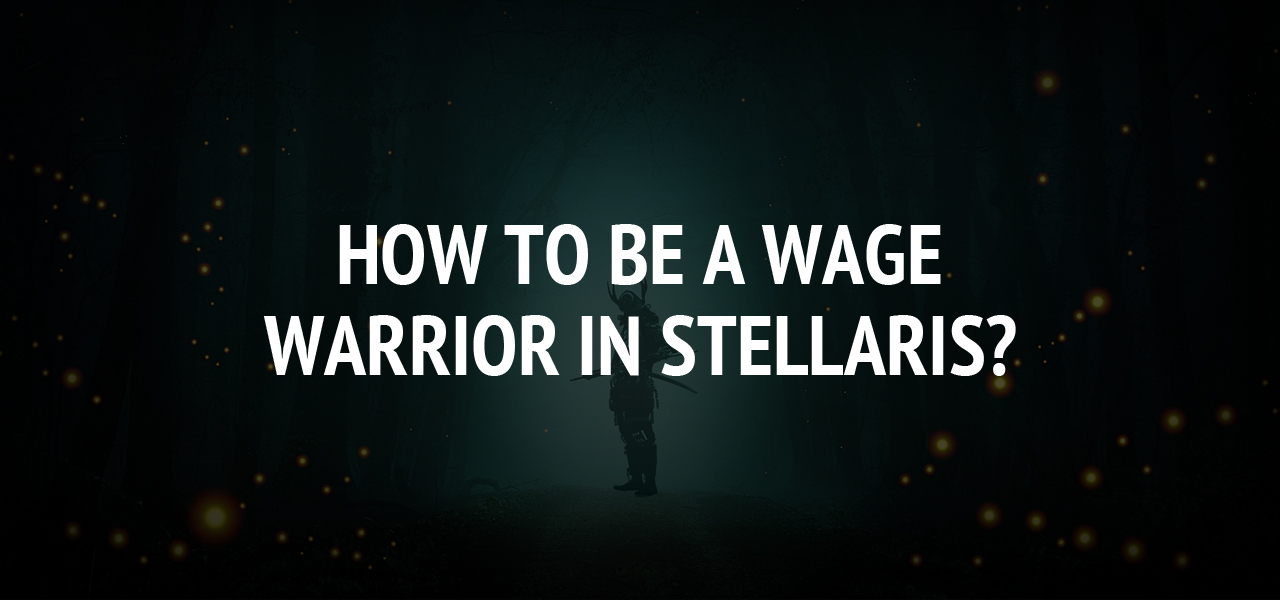How to Be a Wage Warrior in Stellaris?

You have many options in Stellaris for attaining your goals, but you'll almost certainly have to confront other civilizations, and war isn't simple to master.
In Stellaris, war is almost inescapable. Your Empire's ultimate goal, regardless of how you became involved in a fight, is to not only endure but to survive in the galaxy. Before launching a war, an empire must have a Casus Belli - a legal basis for declaring war. Each Casus Belli delivers a unique type of Warfare mission. After a declaration of war, the defending Empire gets one year in-game to declare their War goals. These War goals may influence whether or not an enemy force surrenders or accepts a ceasefire on your terms.
In Stellaris, combat occurs in real-time; although the user can direct a fleet towards and away from foes, they have little control over them once they've engaged them. If you tap on the combat while fighting any competitors, a menu will appear, giving you a legitimate update on how the combat is going. As the conflict unfolds, the report sub-screen indicates how successful the weapons systems are, as well as how much damage the shields, armor, and hulls have suffered. Examining this information will allow you to determine whether your ship's current designs are successful against your adversary. Early encounters can help you learn your opponent's strengths and weaknesses, allowing you to respond and attack them.
In the middle of a battle, all ships in a fleet have the option of triggering an emergency withdrawal. Each ship's FTL engine, if it's a Hyperdrive or a Jump Drive, is used to make a quick departure to save the fleet from destruction. To send a retreat order, tap the Retreat button in the combat sub-screen, which can be submitted anywhere in the system if a fleet has the choice to evacuate while in Evasive posture. It will do so instantly. If half of the AI fleet is destroyed in neutral or hostile territory, it will always retreat.
On the screen, each fleet displays a strength number that indicates the fleet’s cumulative offensive capability. Commanders can lead fleets that you recruit, providing a boost to their forces, particularly if they have a valued characteristic. A large Naval Capacity enables you to construct a huge number of ships, while a large Fleet Capacity restricts the number of ships you can place for each fleet.
The warships you construct can have a huge effect on how you fight. On their own, Corvettes and Destroyers are small and insignificant, but a huge number of them can overpower an adversary. Cruisers, Warships, and Titans can take a lot of punishment and dish it out, but they take a long time and many resources to build. Huge groups of Corvettes must be used to rush the adversary and get close, while Warships and Titans give covering fire from a distance.
If your group has survived difficult combat but suffered damage, as a result, it's wise to return to the nearest shipyard for repairs, or just grab one of the best weapons in Stellaris. A freshly arrived fleet, on the other hand, could utterly handle yours. Researching and equipping your fleets with Regenerative Hull Tissue technology will progressively regenerate your armor.
Exotic Gases for Shield Enhancement is one of numerous Resource Base Edicts on the Edicts UI page to give your ships a fighting benefit. It can increase the Shield Strength of all your fleets by 25%. To meet with all of these Edicts, you'll need a broad inventory of Strategic Resources. They only last about ten years, and they can also improve the efficiency of your fleets. Based on the conflict you're in, there's also a Policies UI tab. After completing the Supremacy Tradition tree, you'll be able to access the War Doctrine policy, which establishes the broad key strategic philosophy your ships will employ.
Improved starbase defenses can give you a home-field advantage if your Empire's fleets aren't as large or powerful as a rival's. Defensive components, buildings, and defense platforms on starbases can be difficult to counter, particularly when supported by a system-wide fleet. They could also be used to slow, startle, or even halt an aggressor based on their placement.
Pulsars that deactivate all defenses, Black Holes, which make it very difficult for vessels to detach or escape, and Neutron Stars, which decrease sublight velocities by 50%, are just a handful of the planets that potentially do damage to ships. All sensor coverage from the outside is blocked if a star system sits within a Nebula Cloud, indicating an empire can't get what is within and beyond the nebula's hyper-lanes without the need for a ship or stations present.
Although space fights are important in Stellaris, ground combat is as important. To seize rival worlds, armies will be required and the requisite strategy and tactical understanding. Planet invasions, on the other hand, are only conceivable when the platform's starbase has been captured or demolished.
Certain structures automatically recruit defense armies, but attack armies must be acquired separately and transported to transport ships. Keep in mind that these transports have no self-defense abilities, and they might be eliminated if they come into contact with a hostile fleet. They should be accompanied by a competent fleet and only enter hostile systems when the route is clear.
Both you and the opposite side will tire of fighting as time passes. The entire exhaustion and attrition of all Empires on one side or the other are shown by War Depletion, which goes from 0% to 100%. Attrition causes fatigue, which happens gradually over time, but can also be exacerbated by battle losses and losses. This includes victories in space and ground combat, the takeover of territory and worlds, and the devastation of the entire globe.
That's it for this article. This game is all about personal experiences and customized gameplay. So, we are eager to know about your experience. Let us know what you like about this game in the comment section. Happy Gaming!
About The Author
Related Blog
View All-
Delicious - Emily Games For Free
"Delicious - Emily's" is a popular time-management casual game series where the player takes on the role of Emily, a waitress trying to run her own restaurant business. Multiple games in the series can be played for free on websites such as GameHouse ...
-
How to Manage Your Own Virtual Private Server (VPS) Via Mobile Phone
A virtual private server offers easy scaling, dedicated resources, and full root access to your server. Ideally, hosting providers, ones much like high-quality options similar to VPS Hosting enable users easy, and flexible controls to get the most out of the VPS ...







